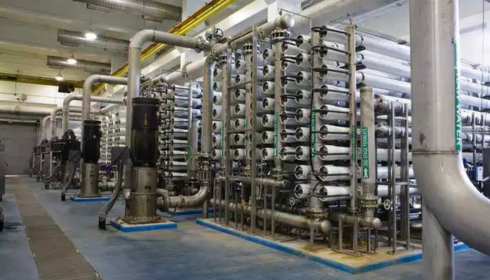It’s strange how we take water for granted, isn’t it? We twist the faucet, fill a glass, and assume it’s pure enough to drink. But if you’ve ever noticed a faint metallic taste, cloudy residue on dishes, or your skin feeling dry after a shower — you’ve already met the hidden side of untreated water. Today’s households are slowly waking up to a quieter revolution in home health: advanced point of use systems designed to make every drop clean, crisp, and genuinely safe.
The Smallest Devices Making the Biggest Difference
Unlike whole-house filtration systems that treat every gallon before it enters your plumbing, point-of-use models work exactly where you need them most — under the kitchen sink, connected to the ice maker, or even beside your coffee machine. They’re compact, surprisingly powerful, and can turn questionable tap water into something you’d be proud to serve your guests.
Think of it this way — instead of filtering thousands of litres that you’ll never drink or cook with, you’re focusing on precision. It’s efficiency meeting practicality. Many modern homeowners appreciate that balance: targeted purification without the heavy price or maintenance of full-scale installations.
More Than Just Marketing Buzz
Let’s be honest — there are hundreds of water filters out there. Every brand claims to be “the best,” but one phrase separates real reliability from hollow promises: NSF certified.
Those three letters mean the system has gone through rigorous third-party testing by NSF International — a nonprofit that sets the global standard for food, water, and consumer goods safety. When a filtration unit carries that badge, it’s not just a sticker; it’s a declaration that it actually performs as advertised. It’s your assurance that contaminants like lead, chlorine, PFAS, and other nasties are genuinely being filtered out to measurable standards.
In a world flooded with greenwashing and marketing hype, certification like this keeps things honest. It’s the quiet difference between “we think it’s safe” and “we know it’s safe.”
How Reverse Osmosis Became the Gold Standard
For anyone who’s serious about water purity, there’s one technology that consistently stands out: reverse osmosis. It sounds technical, but the concept is beautifully simple. Imagine water being pushed through a semi-permeable membrane so fine it can block even dissolved minerals, salts, and bacteria. What comes out on the other side is clean, pure, and free of almost everything your city supply can throw at it.
RO systems are often paired with pre-filters and carbon stages, so they don’t just purify — they polish. The result? Water that tastes as fresh as it feels. Coffee brewed with RO water tastes richer. Soups feel cleaner. Even your ice cubes come out clearer than ever. It’s not a luxury anymore — it’s becoming the new normal for families who value long-term health and transparency in what they consume.
Everyday Comfort Meets Environmental Awareness
One might assume that filtering water adds to waste, but it’s the opposite. When you stop buying bottled water, you cut down on plastic waste and save a surprising amount of money over time. It’s sustainable living that doesn’t demand sacrifice.
Plus, when your filtration system is tailored to your tap’s chemistry, you waste less water in the process. Many modern systems come with smart sensors that alert you when filters need changing — no guesswork, no unnecessary replacements.
The Real Benefit You Can Feel
Beyond taste and texture, the biggest difference purified water brings is subtle — but deeply personal. Better hydration means clearer skin. Cooking with cleaner water preserves the flavour of food. Even pets benefit from drinking fresher water.
Most people only realize the difference once they switch. Suddenly, that faint odour they’d learned to ignore disappears. Tea tastes brighter. And maybe — just maybe — they start drinking more water without even trying.
That’s the quiet power of cleaner living: it slips into your routine until you can’t imagine life before it.
Choosing What’s Right for Your Home
When shopping for filtration, don’t rush to the fanciest or most expensive option. Start small. Evaluate your local water report, understand what contaminants you’re dealing with, and choose a system that targets those.
A good vendor or water specialist will help you match your needs — maybe a single under-sink RO unit for your kitchen, or a combination system that tackles hardness, chlorine, and microbes all at once.
What matters most isn’t brand prestige; it’s proven performance, verified safety, and practical use.
The Future of Everyday Water
The global movement toward cleaner, smarter homes isn’t slowing down. Whether it’s advanced filtration, leak sensors, or eco-efficient plumbing, technology is reshaping something as basic as water into an experience — safer, tastier, more sustainable.
It’s not just about avoiding illness or protecting appliances. It’s about rethinking what “normal” water should be — a standard of purity we all deserve, not a privilege.
So next time you fill your glass, take a moment. Think about the invisible work happening inside that little filter under your sink. Behind that simple act is innovation, trust, and a quiet promise — that what you’re drinking is as clean as it should be.
Clean water shouldn’t be a luxury. It should be a given. And thanks to new filtration technologies, careful certifications, and conscious choices, it finally can be — right at the point where you need it most.

